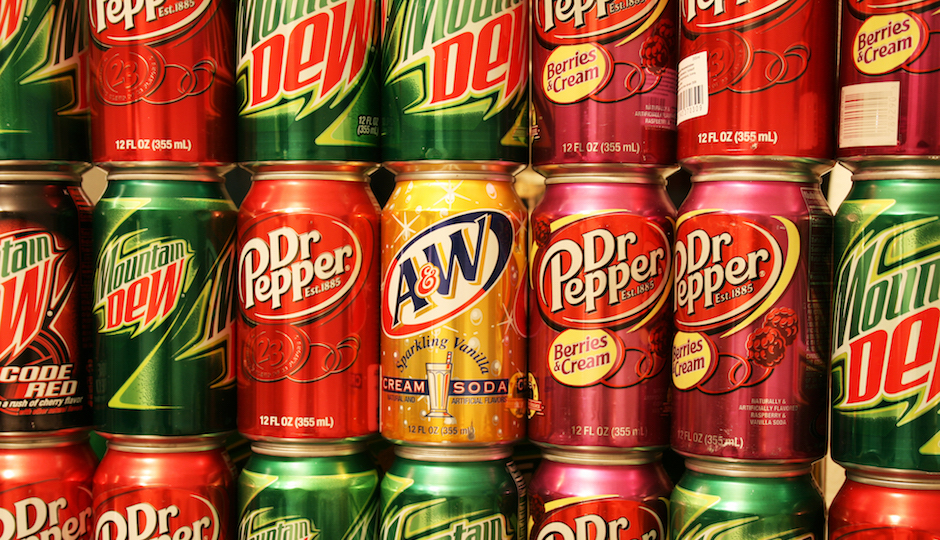Officials: Philly’s Sugary Drink Sales Will Drop by 55% Under Kenney’s Tax

Image via Alexander Kaiser, pooliestudios.com
That’s a lot fewer Big Gulps.
Under Mayor Jim Kenney’s proposed soda tax, officials estimate that sugary drink sales in Philadelphia would drop by 55 percent next year. Deputy Revenue Commissioner Marisa Waxman told reporters Monday that residents would go from purchasing 61,288,194 gallons of sugary beverages in 2016 to 27,775,402 gallons in 2017.
Waxman said she doesn’t know whether the expected drop in sales would occur because people would drink less soda overall, or leave the city to purchase it. “It could be any of those options,” she said. “It could be folks switching to a different type of beverage. It could be folks abstaining. It could be folks buying elsewhere.”
To determine the impact of Kenney’s proposed 3-cents-per-ounce soda tax, the city looked at a meta-analysis of 13 studies, as well as the experiences of Mexico and Berkeley, California, which have both recently passed levies on sugary drinks.
As part of their estimates, officials assumed that the average price of sugary drinks in Philadelphia would rise by 55 percent under Kenney’s tax. This increase is what would drive the drop in sales, they said.
Finance director Rob Dubow said that prices may not actually go up by that much, though, depending on how the tax trickles down from distributors, where it is levied, to store owners to consumers. “What [the analysis] assumes is that the full price is passed on, which may not happen,” he said. “So in some ways that makes these projections conservative.”
The soda industry begs to differ. Economist Kevin Dietly, a consultant for the American Beverage Association, said his analysis shows that sugary drink sales would drop by a much higher rate of 79 percent if the soda tax passed. That means the city would only raise $279 million from the levy over the next five years, he said, not the $432 million that Kenney is expecting.
After 2017, the Kenney administration said sugary drink sales would continue to drop, but only by 1 percent annually. Officials said this smaller dip would occur because of a decades-long decline in soda consumption taking place nationwide, not because of the city’s soda tax.
A few big questions immediately come to mind: If sugary drink sales drop by 55 percent (or more), how will that impact grocery and bodega store owners? “We … don’t assume that this is a 55 percent reduction in stores’ sales,” said Kenney’s finance director, Rob Dubow. “Because we assume that people move on to other products.”
We doubt business owners will be mollified by that.
Also, will the city collect less money from the sales tax because residents are buying less soda? Dubow said he doesn’t expect Philly’s sales tax revenue to decline overall because, like he said before, people will use the extra money to buy other grocery products. But what if that product is water, which is not subject to the sales tax?
Speaking of taxes, how can residents trust the city to do a good job collecting soda taxes, when it failed to get many property tax deadbeats to pay up under former Mayor Michael Nutter? Officials said they are investing $1.8 million in the revenue department to make sure soda distributors fork over the tax dollars. However, they expect that 10 percent of soda tax revenues won’t be collected in the first year because of non-compliance. They believe that figure will drop to 7 percent in subsequent years.
Kenney is proposing a soda tax to pay for a number of new initiatives, including expanded pre-K, community schools, and a massive renovation of the city’s public spaces.
This weekend, the Inquirer found that Kenney’s tax would hit fountain sodas harder than he advertised — under his legislation, they would be taxed at a rate of 4 1/2 cents per ounce, as opposed to 3 cents per ounce. Dubow said Monday that the city will amend the bill so that fountain sodas are taxed at 3 cents per ounce instead.
The city’s sales projections were based on that number. Conversely, the soda industry’s estimates assume that fountain sodas would be taxed at the higher rate.